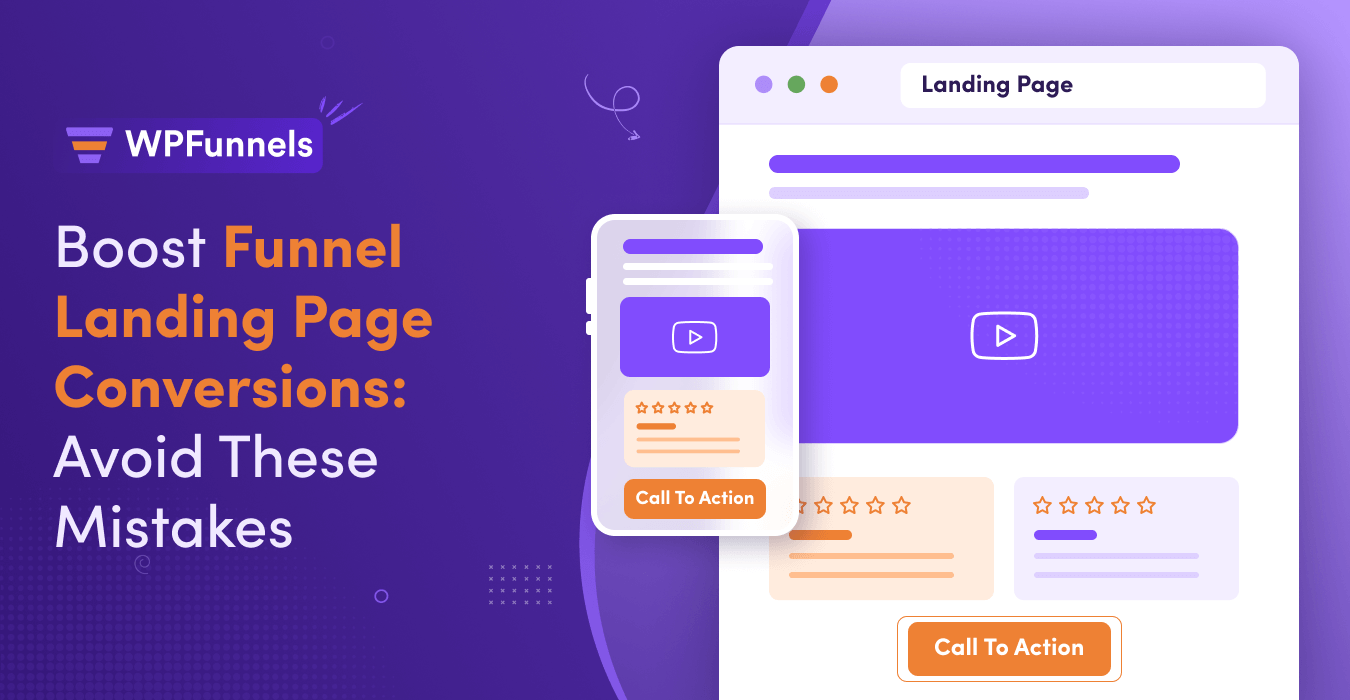When using sales funnels, it is necessary to have a clear understanding of how each stage of your funnel is performing so that you can determine drop-off points to improve on and estimate a possible ROI.
As a result, you will need to analyze a few essential metrics for sales funnel tracking.
Today, you will get a clear understanding of what metrics to track so that you can stay on top of your sales funnel performance.
Let’s dive in.
What Do You Mean By Sales Funnel Tracking?
Sales funnel tracking refers to the process of measuring and analyzing metrics across each stage of the sales funnel to evaluate performance. It provides visibility into customer engagement and conversion rates as prospects move through the awareness, consideration, evaluation, and purchase stages. Tracking key metrics helps identify leaks in the funnel and opportunities for improvement.
Importance of Tracking Sales Funnel Performance
Monitoring sales funnel metrics is crucial because it
- Helps gauge the effectiveness of marketing and sales efforts
- Identifies weak points and opportunities in the funnel
- Provides data to optimize campaigns and strategies
- Informs allocation of resources and budgeting decisions
- Allows setting measurable goals and benchmarks
- Drives higher ROI from campaigns and channels
Overall, it is a necessary step to make your marketing strategy a success.
Essential Metrics For Sales Funnel Tracking & Analysis
Now, let us look at the key metrics that you should be focusing on for effective sales funnel tracking.
1. Product Awareness Metrics
These metrics help assess audience awareness about your product in the initial stage.
i. Impressions and Reach
Impression & reach refers to how many people you were able to reach or how many times ads or content were displayed to users in your marketing campaigns such as Paid Ads, social posts, articles, etc. Having high impressions and reach means your product is gaining visibility in the respective marketing channels.
ii. Social Media Mentions and Engagement
Social signals are very important in understanding your audience and are mostly reachable through social media. If you are able to create a buzz there, it will trigger interest in several potential leads. Plus, you may also leverage word-of-mouth and brand affinity through people in various social channels.
In this case, you may track mentions, likes, shares, and comments to understand the engagement levels in each of your social promotional channels.
2. Lead Acquisition Metrics
You should also track your marketing efforts for capturing and qualifying leads.
i. Website Visits
For lead acquisition, you will need to drive traffic to your website. The more visitors that come to your website, the higher the chance of generating leads.
You have to track metrics such as unique visits, repeat visits, and visit-to-lead rates. This will help to find out the engagement rate of your traffic and leads.
ii. Landing Page Conversion Rates
For any landing pages you have, track the conversion rate, time on the page, and event triggers. This will help determine the effectiveness of your copy and design. Plus, you may also determine the drop-off points on the page.
3. Interest and Consideration Metrics
Track metrics that will help to analyze the interest level of your prospects.
i. Email List Sign-ups
If you have an opt-in form set up for inquiries or email list subscriptions, track how many sign-ups you are getting and the lead velocity compared to your traffic.
This will help with understanding the placement of the form and the overall form design & layout itself.
ii. Product Demo Requests or Downloads
As people go down the funnel, you may find yourself getting more demo requests or downloads of lead magnets. You should track these so that you can ensure your promotional activities for conversions are working successfully.
4. Evaluation and Intent Metrics
Track funnel metrics that signal that customers are evaluating your solutions and have shown buying intent.
i. Cart Abandonment Rate
Abandoned cart is a common issue in any online business. You may track the cart abandonment rate to see how often people drop off right at the last moment during checkout. This will help you understand if the checkout process has any issues. If the rate is high, you need to work on improving the checkout process to reduce this.
ii. Wishlist/Save for Later Metrics
Track how products have been saved for later or added to the wishlist to help you identify which products to focus more on for promotion, re-targeting, and restocking.
5. Purchase Metrics
Track the metrics that directly indicate the performance related to purchases.
i. Conversion Rates
Conversion rate tells you the percentage of visitors who turn into actual customers. A higher conversion rate indicates that your website or sales funnel is effective in convincing visitors to make a purchase.
ii. Average Order Value (AOV)
The average order value refers to how much your customers tend to spend on average when placing orders. Tracking your AOV will help with understanding your customers’ common spending limit and plan to increase it.
6. Post-Purchase Metrics
You should track a few necessary metrics that depend on marketing activities after the initial purchase.
i. Customer Satisfaction (Reviews, Ratings)
Track the customer ratings and reviews to identify the high-performing products to help decide which products to promote more.
ii. Repeat Purchase Rate
Keep an eye on the repeat purchase rate of certain products to find out the products that are more popular.
Plus, track the repeat purchase rate of each customer to find out loyal customers to whom you may offer additional benefits to drive more sales.
How To Track Sales Funnel Metrics
To conduct effective sales funnel tracking, you may use tools that are useful in building your funnels along with built-in sales funnel analytics to let you track the necessary metrics.
For example, you may use WPFunnels to craft a well-planned sales funnel journey in WordPress. Along with WPFunnels, you may use Mail Mint to handle the email marketing part of your funnel.
Tracking Funnel Metrics Using WPFunnels
Besides offering you every feature needed to create sales funnels such as custom landing pages, custom checkout layout, post-purchase one-click upsell, etc., you will get detailed analytics on your overall funnel.
WPFunnels will let you track the performance of each funnel step such as unique visits, conversion rate, and bounce rate. Plus, you will get additional metrics such as revenue earned from specific offers, leads collected, and the overall comparison of performance over time.
![Essential Metrics For Sales Funnel Tracking & Analysis [2024] 2 WPFunnels Analytics for sales funnel tracking](https://getwpfunnels.com/wp-content/uploads/2024/01/WPFunnels-Analytics-for-sales-funnel-tracking.webp)
You will get such a detailed sales funnel analytics dashboard from every funnel you create using WPFunnels, making sales funnel tracking quite easy.
- Learn more about WPFunnels analytics.
Tracking Funnel Email Metrics Using Mail Mint
Mail Mint will ensure you will have every email marketing feature for your funnels such as lead capture form, lead segmentation, email campaigns & series creator, drag and drop email builder, email automation, and abandoned cart recovery. Along with these, you will get detailed analytics on every lead, campaign, and form, making it a prime email marketing automation solution for your funnels.
![Essential Metrics For Sales Funnel Tracking & Analysis [2024] 3 Key Metrics To Measure Email Marketing Analytics](https://getwpfunnels.com/wp-content/uploads/2023/09/Screen-Shot-2023-09-28-at-2.46.21-PM.webp)
- Learn more about Mail Mint.
External Tools For Tracking And Analysis
In addition to a sales funnel builder and email marketing tool with accurate analytics, you may also track metrics using certain external tools.
- Google Analytics for tracking website traffic and conversions
- Microsoft Power BI for advanced interactive data visualization and business intelligence
- Looker for business intelligence analytics tracking.
Integrate these with your existing stack for comprehensive tracking and analysis.
Best Practices for Product Sales Funnel Metrics Analysis
So far you have learned what metrics to analyze for effective sales funnel tracking. Now, to ensure you are tracking the right metrics, and utilizing them properly, here are a few best practices.
i. Defining and Aligning KPIs
The first step in successful product sales funnel tracking is establishing and aligning Key Performance Indicators (KPIs) that accurately reflect your business objectives.
Define clear KPIs to ensure that your analysis is focused on the most relevant aspects of the sales funnel, providing insights into critical stages such as lead generation, conversion rates, and customer retention.
Align KPIs with broader business goals to ensure that the analysis contributes directly to strategic objectives, guiding teams toward impactful improvements in the sales process.
ii. Continuous Monitoring and Iteration
Effective sales funnel analysis is an ongoing process that involves continuous monitoring and iteration. Track KPIs regularly to identify trends, patterns, and potential areas for improvement. Continuous monitoring facilitates quick responses to changes in customer behavior or market dynamics.
Moreover, the iterative nature of the analysis enables you to experiment with different strategies, assess their impact, and refine their approach based on real-time insights.
This dynamic approach will ensure that the sales funnel remains adaptable and responsive to evolving market conditions.
iii. Integration of Data Sources
For comprehensive and insightful sales funnel analysis, it’s essential to integrate data from various sources.
This may involve using a CRM system, pixel tracking, and Google Analytics tracking.
Many businesses avoid this to reduce their costs. But in reality, making data-driven decisions is the best way to develop the best sales funnels.
Conclusion
Now, you have a comprehensive idea of what metrics to analyze for proper sales funnel tracking. If you put some effort into collecting data, you will be able to optimize your funnel performance and increase your overall ROI.
Rely on tools like WPFunenls and Mail Mint to have easy access to analytics while having the ability to craft high-converting funnels for your customers.
So go ahead and start tracking your funnel metrics effectively to achieve higher results and continuous business growth.
Frequently Asked Questions (FAQs)
1. Why is sales funnel tracking important for businesses?
Sales funnel tracking is crucial as it provides insights into the customer journey, helps identify bottlenecks, and enables businesses to optimize their sales processes for improved efficiency and higher conversions.
2. Why is it important to track customer retention metrics in the post-purchase stage?
Monitoring customer retention metrics, such as repeat purchases, customer satisfaction scores, and post-sale engagement, helps businesses assess the effectiveness of their post-purchase strategies.
3. How can I use customer feedback metrics for sales funnel improvement in my business?
Customer feedback metrics, such as Net Promoter Score (NPS) and customer reviews, provide valuable insights into customer satisfaction and areas for improvement within the sales funnel.
4. What are some warning signs in sales funnel metrics that indicate potential issues?
Warning signs may include a significant drop in conversion rates, prolonged sales cycle times, or high bounce rates on key pages. Identifying these signals early will enable you to address issues promptly.
5. How often should I review and adjust their sales funnel metrics in my business?
Regular reviews, ideally on a monthly or quarterly basis, are recommended to stay agile and responsive to market changes. Continuous monitoring will allow you to adapt your strategies based on real-time data and evolving customer behaviors.

![How To Create A Gym Funnel - A Proven Marketing Strategy For Gyms [2025] 4 Plan A Gym Funnel](https://getwpfunnels.com/wp-content/uploads/2022/09/Gym-Funnel-.png)
![How to Build a Profitable Online Course Business for Additional Income [2025] 5 Online Course Business](https://getwpfunnels.com/wp-content/uploads/2025/01/Online-Course-Business.webp)
![What Is A Marketing Automation Funnel - Ultimate Beginner's Guides [2024] 6 Marketing Automation Funnel](https://getwpfunnels.com/wp-content/uploads/2024/04/42.-What-Is-A-Marketing-Automation-Funnel-Beginners-Guides.webp)


![How to Create and Sell Courses Online in WordPress? Beginners Guide [2025] 13 Create and Sell Online Courses in WordPress](https://getwpfunnels.com/wp-content/uploads/2022/08/Create-and-Sell-Online-Courses-in-WordPress.png)